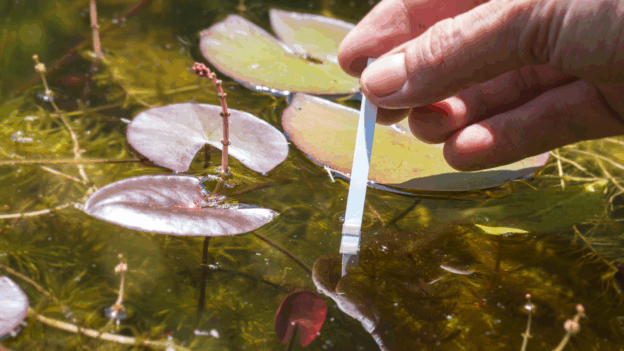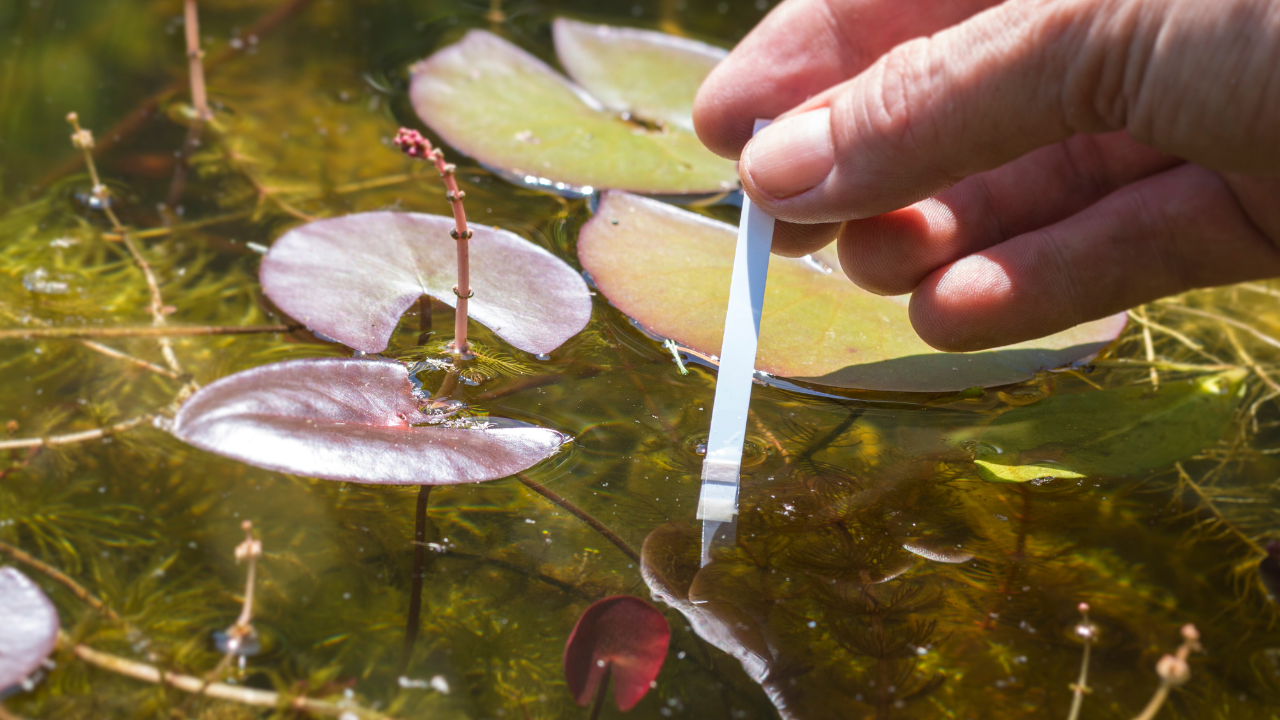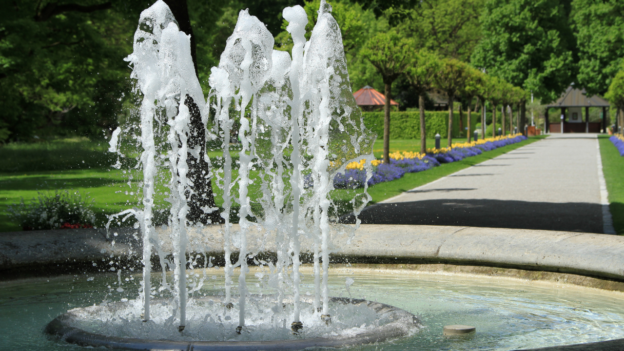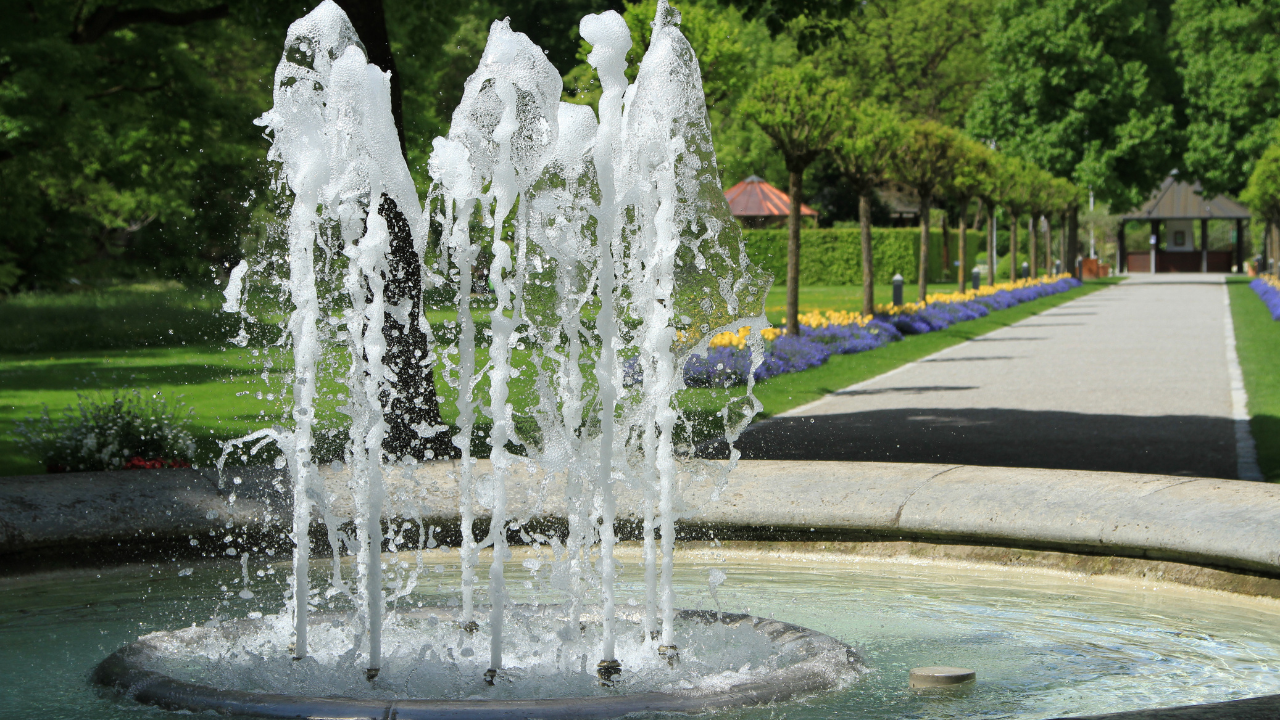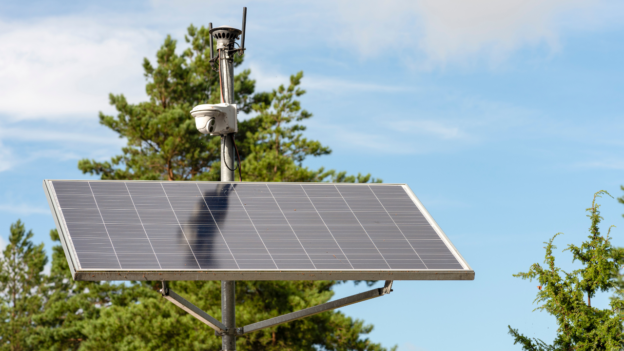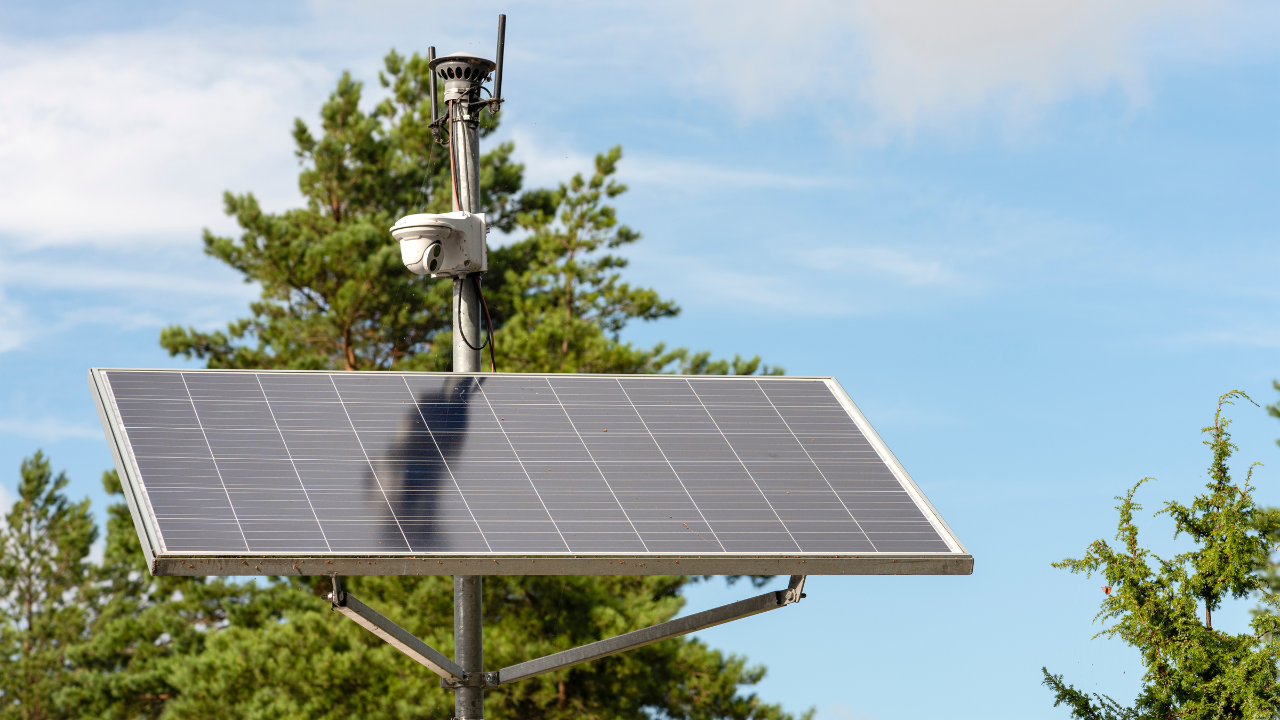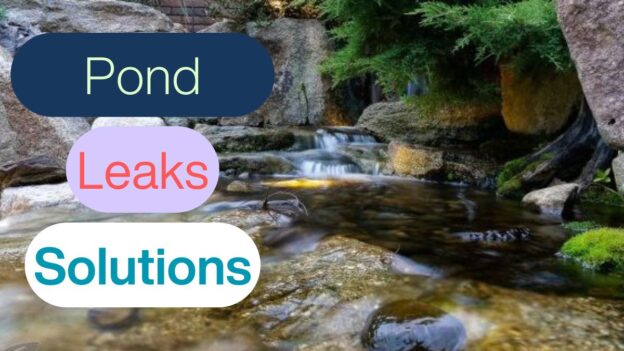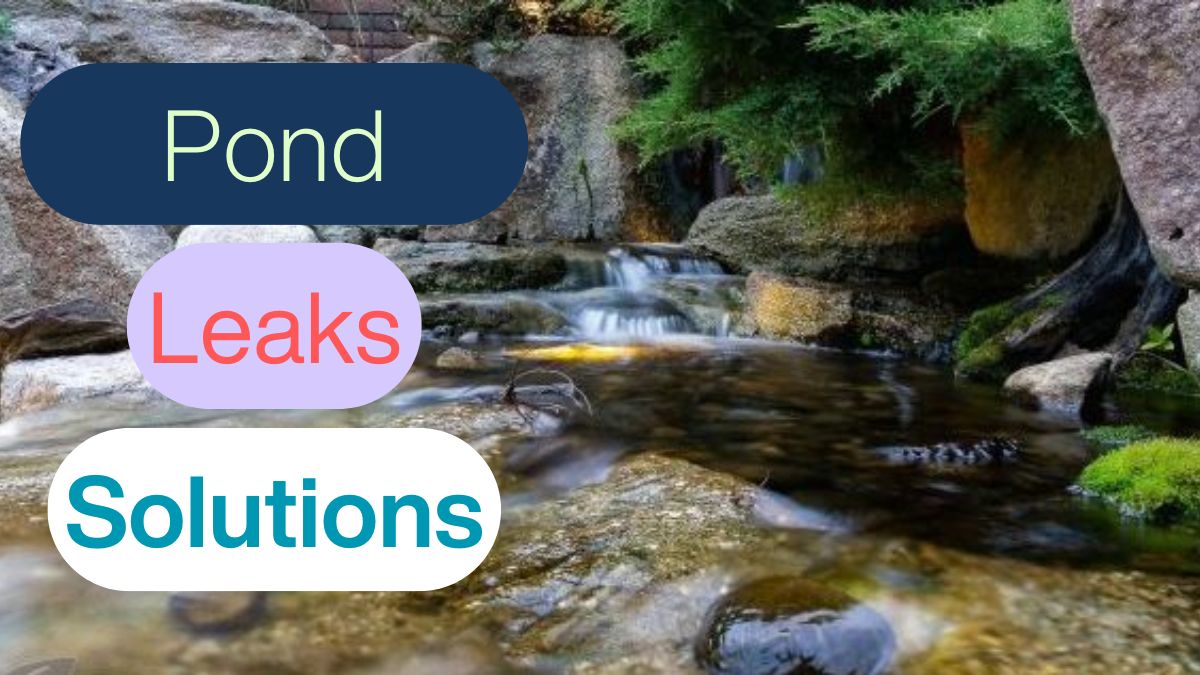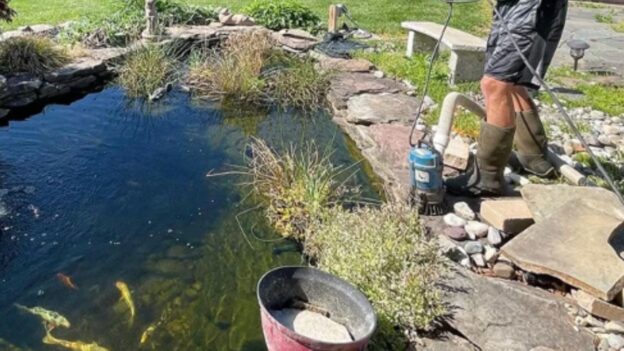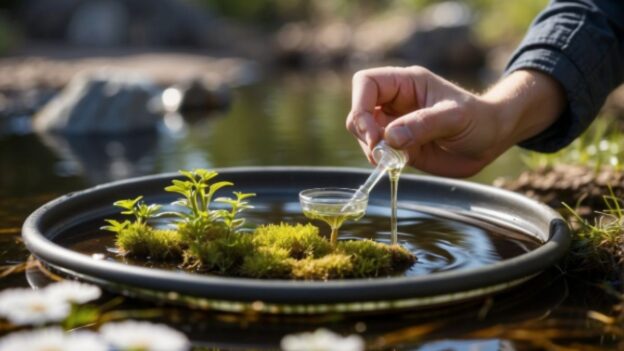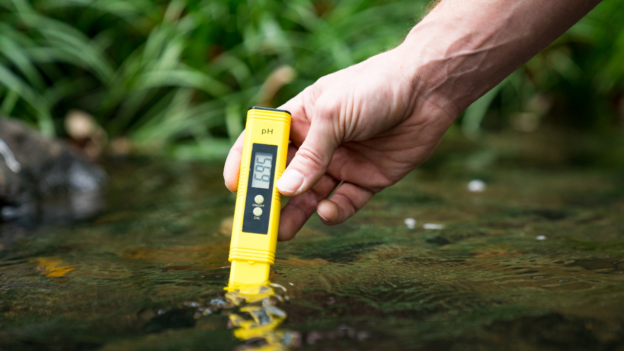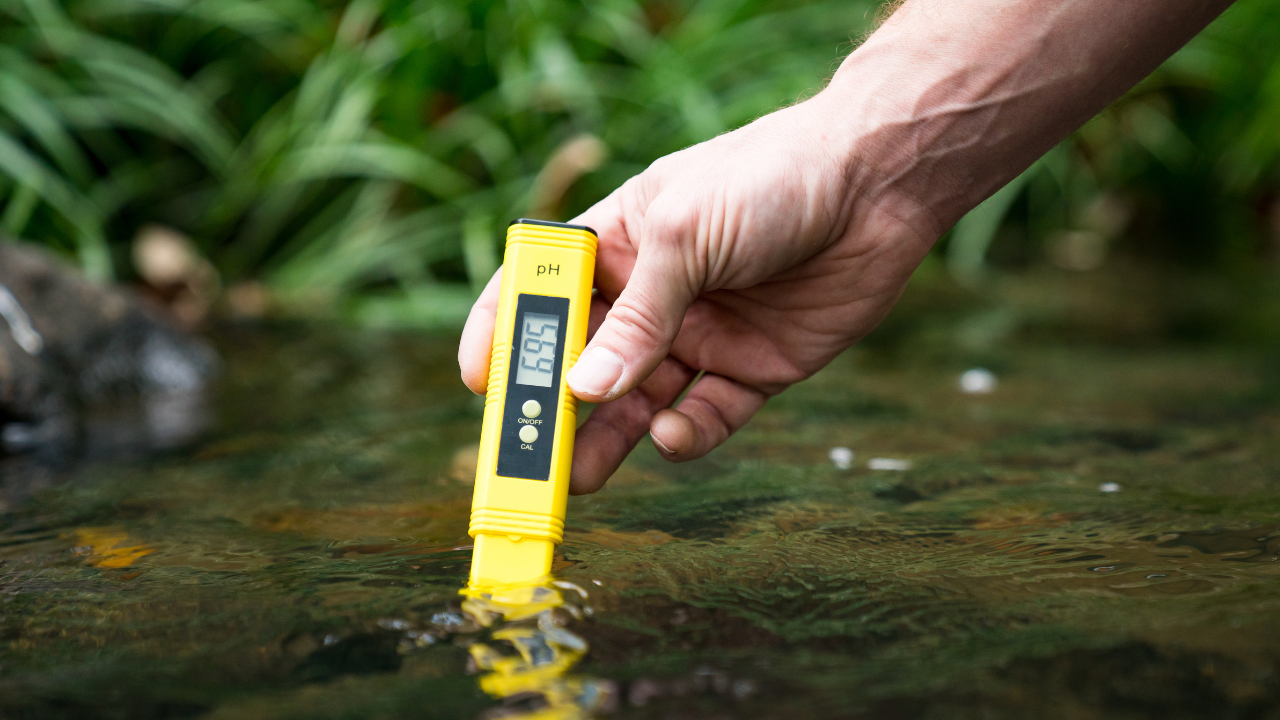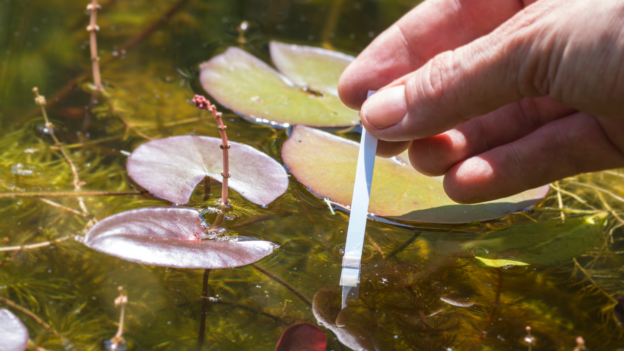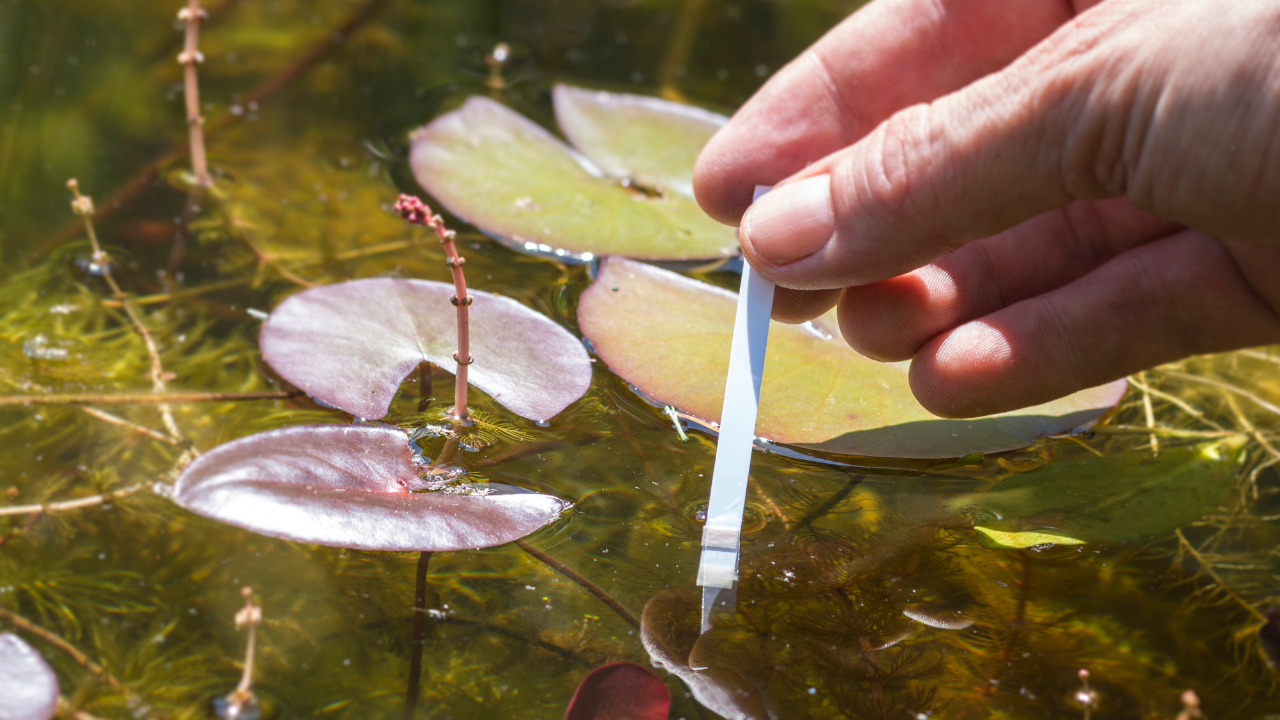Key Takeaways
- The ideal pond pH level is between 6.8 and 8.2 for healthy fish and plants.
- pH outside this range can stress koi and pond fish, leading to illness or poor growth.
- Factors like algae growth, rainfall, and water changes often affect pond chemistry.
- Regular testing and professional pond care services help maintain stable conditions.
- Using quality equipment and parts prevents sudden shifts that lead to costly repairs.
The pH level measures how acidic or alkaline pond water is, and it’s a vital factor in the health of aquatic environments. Stable pH supports koi ponds, water gardens, and outdoor fountains by keeping fish, plants, and beneficial bacteria in balance.
Koi and other pond fish need water stability. Large fluctuations in pH can weaken their immune systems, affect growth, and even shorten their lifespan.
What Is the Ideal pH Level for a Healthy Pond?
The best range for most ponds is 6.8 to 8.2. This zone provides the right conditions for koi pond maintenance, aquatic plants, and biological activity in the filtration system.
- Acidic (below 6.5): Stresses fish, reduces oxygen uptake, and harms plants and animals.
- Alkaline (above 8.5): Makes ammonia more toxic, disrupts bacterial cycles, and causes water clarity issues.
Keeping the water within the healthy range ensures koi, plants, and pond equipment all function properly.
Common Causes of pH Fluctuations
Ponds in Orange County face challenges due to climate and seasonal shifts. These are some of the most common reasons pH moves out of balance:
- Algae problem: Daytime algae raises pH while nighttime drops it sharply.
- Heavy rainfall: Dilutes pond water, causing sudden acidic conditions.
- Tap water additions: Orange County tap water often leans alkaline, which can disrupt balance.
- Organic waste: Decaying leaves and overfeeding alter the nitrogen cycle.
- Water changes: Large adjustments upset water levels and shock aquatic environments.
- Pond leak issues: A hidden pond leak may reduce stability by pulling water and minerals unevenly.
Signs of pH Problems in Your Pond
You may notice pond fish and plants reacting poorly before water tests confirm a problem. Common signs include:
- Koi gasping at the surface or swimming erratically
- Loss of appetite and hiding behavior
- Stunted plant growth and dying leaves
- Persistent algae problem even with cleaning
- Declining water clarity and cloudy conditions
If these issues occur alongside equipment strain or visible liner wear, it may also point to pond leak detection needs.
Testing and Monitoring Pond pH
Consistent monitoring is one of the most important parts of pond maintenance.
- Test pH at least weekly.
- Take readings morning and evening to see daily fluctuations.
- Track results to catch gradual shifts before they harm koi ponds.
Digital meters and chemical test kits are both reliable. Professional services often add water clarity checks, ammonia tests, and overall pond equipment inspections.
Balancing Pond pH Levels
If readings fall outside the ideal range, the first step is finding the cause. Here are common solutions:
- Add aquatic plants such as lilies to reduce algae.
- Perform smaller water changes gradually to stabilize chemistry.
- Use conditioners or buffers designed for ponds.
- Inspect and upgrade the filtration system to handle organic waste.
- Improve aeration with fountains or UV lights for oxygen stability.
For persistent issues, professional water treatments or fountain maintenance may be needed to restore balance.
Preventive Care for Healthy Water Chemistry
Maintaining a stable pH is much easier with consistent preventive pond care. This includes routine pond cleaning, seasonal inspections, and koi pond maintenance visits to check water chemistry.
Trusted providers also supply high-quality pond fountain parts and supplies in Orange County such as pumps, UV sterilizers, and filters. Reliable parts reduce swings in water chemistry and prevent breakdowns that can harm fish.
The Role of Professional Maintenance
DIY efforts work for basic checks, but professional services offer detailed care, including fountain service, leak detection, and equipment repairs.
Signing up for scheduled pond care ensures your pond’s water chemistry is tested, koi health is monitored, and pond equipment is serviced regularly. This keeps water gardens healthy and reduces the need for urgent pond repairs.
When damage has already occurred, experts also handle emergency pond and fountain repair in Orange County to fix leaks, restore filtration systems, and get outdoor fountains running again.
Seasonal Impacts on Pond pH
Each season in Orange County influences water chemistry differently:
- Spring: Melting debris from winter lowers pH. A thorough pond cleaning helps restore balance.
- Summer: Sunlight and heat cause algae problems, raising pH during the day and stressing koi ponds.
- Fall: Decaying plants and animals add acidity and organic waste, disrupting the nitrogen cycle.
- Winter: Cooler temperatures slow activity, but reduced aeration may allow harmful gas buildup.
Seasonal maintenance, including fountain maintenance and pH testing, helps prevent long-term imbalances.
Long-Term Benefits of Stable pH
Stable pH protects koi fish, plants, and water features while reducing strain on pond equipment. Balanced water levels mean koi grow healthier, plants thrive, and UV lights or filtration systems run more efficiently.
In the long run, maintaining stable chemistry saves money by reducing emergency pond repairs, equipment replacements, and costly treatments.
Making Water Balance a Priority
Your pond’s pH level is one of the most important measures of water health. By testing regularly, maintaining your filtration system, and scheduling professional inspections, you’ll protect koi, plants, and your investment.
At Orange County Pond Services, we’ve been helping homeowners and businesses maintain ponds since 2001. From koi pond maintenance and water clarity testing to pond repairs and fountain maintenance, our certified team provides the expertise you need. Whether you require preventive care or emergency support, we’re here to keep your water features thriving year-round.
